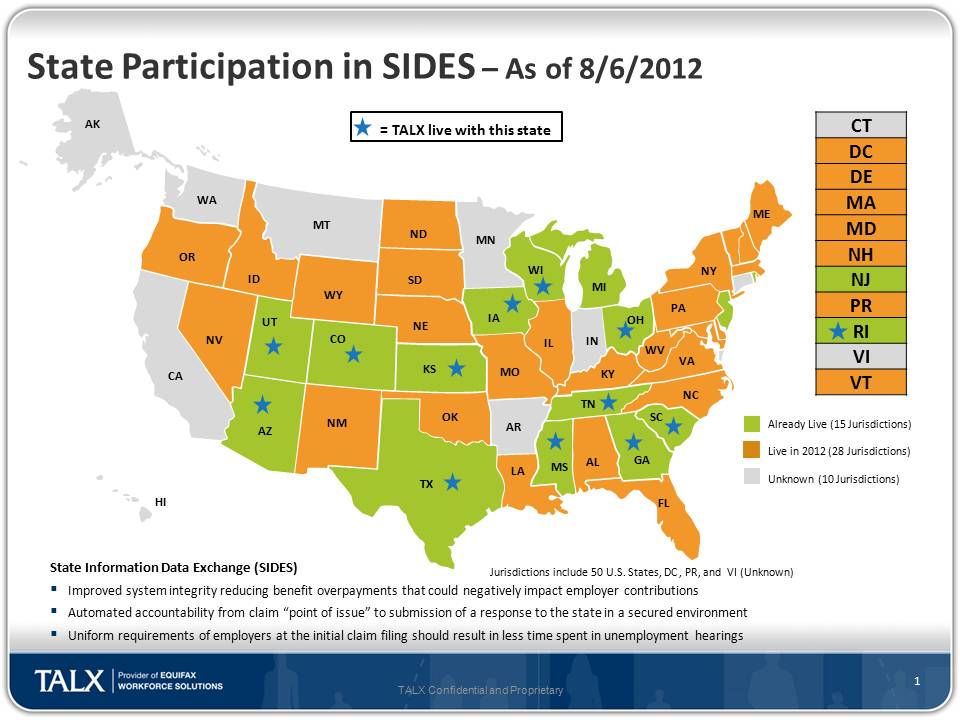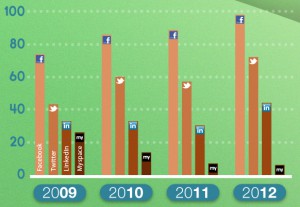
Using a business model has grown to become an essential tool when making any business or financial decisions within the nonprofit sector. When incorporating a new business model, a few key components should be discussed to ensure the business model will not only provide financial stability but also further the growth of operations within your organization. Along with understanding the financial side of a new business model, it is important to factor in the daily tasks that occur in a business, including cash flow—money being transferred in and out of an organization.
Cash flow can be simply defined as a movement of money within the organization’s accounts. It is where the numbers and financial reports show how the money has moved and how it’s been accounted for. When managing cash flow, the question you will be asked repeatedly is “When?” —when do you pay your staff, when will you be receiving a grant payment or when is a particular bill due. And while all nonprofit business models are different in one way or another, they all rely on the “when” with the movement of money.
When creating a nonprofit business model, there are two main components to factor in—what kinds of programs and services does your nonprofit offer to the community and most importantly, how are they funded. Each of these components require the understanding of organizational cash flow in order to have effective financial planning. To further understand what kinds of programs and services a particular organization offers, you would look at where and how money is being spent.
When looking at how an organization is funded, this can provide a better understanding of what’s to come in terms of cash coming into the business. If by chance the cash flow doesn’t quite match up with the services offered, this could be further explained by how the organization receives its funding. Each type of income varies based on certain implications and challenges for cash flow, so if a business model is built primarily around one type of funding, this will have to be factored into the structure of the business model.
Creating a smart and strategic business model requires you to be informed and collaborative in cash flow management. This will ensure that your nonprofit’s long-term strategy isn’t hindered by obstacles that could have been avoided.

For Connecticut, and its pool of steadily increasing jobless workers, it took just over two years.
And now, three years after reaching insolvency, the price of the state’s debt is being leveraged on all employers remaining in the tax rated state system.
Although the principal balance of the $632 million loan isn’t yet due, employers are already being called on to cover the interest payments for the debt. For nonprofits remaining within the state UI system, their organization can expect to add approximately $1.70 per thousand dollars of taxable payroll, or about $25.50 per full time employee to their 2012 UI taxes.
As required by law, all employers within the state tax system will be billed directly for this assessment on or about August 1, which must be paid by August 31. Paid outside of the normal state UI system, this additional fee will add on to the gross overpayment of more than $162 million made by Connecticut in the past three years.
For nonprofits still in the state system, there are other options, such as leaving the state to join a Trust, like the Unemployment Services Trust (UST), that can help save more money and gain greater predictive control over yearly budgeting.
By reimbursing the state dollar-for-dollar the claims of only their own former employees, nonprofits that join UST are able to stop overpaying in the state tax system and do more with their money. In fact, Connecticut nonprofits with 10 or more employees can expect to save an average of $10,484 a year after joining UST.

If your organization is considering having an audit for the first time or changing auditors, it is wise to exercise due diligence when obtaining bids for services. With the continued focus on transparency and accountability by government agencies, donors, parent organizations and the general public, the selection of a qualified certified public accountant (CPA) has become increasingly important.
Quality audit and accounting services help nonprofit organizations safeguard their assets; improve internal controls and efficiency; complete timely and accurate returns to comply with federal and state regulatory filing requirements; and stay on top of regulatory requirements, accounting standards and industry best practices.
Before you request bids, your organization needs to answer a few key questions:
Gone are the days of calling a couple of CPAs to say, “Give me a bid,” and reaching an agreement with a handshake. Today’s organizations need to be conscientious about their selection of a CPA. Conducting a diligent and thorough selection process not only satisfies key stakeholders, but ultimately helps protect the organization.
Barry Omahen, CPA, is the Managing Partner of Lindquist LLP, a certified public accounting firm specializing in audits of not-for-profit organizations and their related employee benefit plans. Barry’s chief responsibilities include supervising Lindquist LLP’s day-to-day operations and the firm’s quality control review process. Email Barry at bomahen@lindquistcpa.com.
Stephanie Kretschmer, Marketing Manager, helps the professionals in Lindquist LLP’s four West Coast offices attract and retain clients. She oversees firm communications and has responded to hundreds of requests for proposal in her career. Email Stephanie at skretschmer@lindquistcpa.com.
To learn more from Lindquist’s nonprofit-focused CPAs, watch the recorded webinar: “Beyond the Numbers- How to Review your Organization’s Form 990.”

Already Offering Multiple Nonprofit-Exclusive Programs, Designed to Streamline Operations and Reduce Overhead Costs, UST Launches Unemployment Insurance Program to Further Safeguard Nonprofits.
Santa Barbara, CA (October 19, 2017) – The Unemployment Services Trust (UST), a program dedicated to helping nonprofits ensure compliance and protect assets, today announced it is rolling out a fully insured program, called UST Secure, which will provide full coverage for all claims within the year as well as access to claims management tools, certified HR guidance and award-winning outplacement services.
Already working with more than 2,200 nonprofit participants from across the nation, UST aims to provide nonprofit organizations with workforce solutions that reduce costs and strengthen their missions. Having received frequent requests for an insurance option over the last few years, UST is partnering with Ohio Indemnity Company to deliver an insurance solution specifically for 501(c)(3) employers.
“We are honored and excited to work with UST,” said Ron Lucki, Vice President of Business Development at Ohio Indemnity Company. “As one of the nation’s leading specialty insurance carriers for nonprofits and financial institutions, we look forward to growing with UST and offering insurance options that will enable UST to serve their clients with insurance protection and peace of mind.”
“UST Secure is another way we can provide financial relief and an invaluable sense of security to the nonprofit community.” Donna Groh, Executive Director, UST
Ohio Indemnity Company is a fully licensed and admitted insurance company that has provided specialty insurance products to all 50 states plus District of Columbia for nearly 60 years. OIC’s financial stability has earned them an “Excellent” rating by A.M. Best, a global full-service credit rating agency and is also listed by the U.S. Treasury as an approved surety bond provider.
“No nonprofit is alike, so we have continuously looked for new resources and program offers to expand our reach within the sector,” says Donna Groh, Executive Director of UST. “UST Secure is another way we can provide financial relief and an invaluable sense of security to the nonprofit community.”
501(c)(3) nonprofit employers who are interested in learning more about UST Secure can reach out to a dedicated Unemployment Cost Advisor at 1-888-249-4788.

“If there is one lesson the nonprofit sector has learned in the past few years, it is the value of maintaining healthy reserves,” says Hilda Polanco in a recent article from Philanthropy Journal.
Here at UST, where we help our members create reserves to pay unemployment claims, we couldn’t agree more.
But finding those unrestricted dollars to fund a reserve is easier said than done. However, it is a necessary step in managing sustainability – a lesson all too clear to many nonprofits during the recent economic downturn. Ms. Polanco provides some insight into how nonprofits can start building their operating reserve. Here is what we learned:
1. Start with nurturing a culture (all the way up to the Board) that strives to produce revenue and surpluses – not just “breaking even”
2. Next, when creating your budget, insert a line-item for “Current Year Contribution to Reserves” so that it is a clear priority for both management and staff.
3. Finally, there must be a reserve policy that states when reserves should be accessed, and defines “when is it a ‘rainy day’?” or “what constitutes an emergency?” This will provide the purpose of the reserves based on your organization’s own individual mission.
Overall, says Polanco, the board should figure out “how much of its unrestricted net assets to make available for management to use as needed (“Operating Reserve”), how much to set aside for a rainy day (“Board Designated”) and how much to earmark for a specific strategic goal (“Special Purpose”).” A reserve is not something that will appear overnight, but by taking these few steps your nonprofit will be on its way toward being a stronger, more stable organization.

Working with an unemployment trust like UST can provide you with a partner that works with you at every stage of the unemployment process. Whether you need help with unemployment claims, appeals, hearings, charge audits, best practices, unemployment reports or client education, a trust can help cut down on costs and administrative burden.
For example, UST helps nonprofits to:
1) Evaluate whether they should opt out of the state unemployment tax system
2) File the paperwork with the state to become a “reimbursing” employer
3) Set up an account reserve just for unemployment costs
4) Provide web reporting with the tools that help you stay abreast of unemployment activity
Unemployment trusts like UST can also offer guidance, preparation and representation at hearings to help you win a claims appeal for improper charges.
By working with the Trust’s claims monitor, especially at the initial level of the claim, an unemployment trust can help you avoid penalties, loss of appeal rights, and it can keep you from being charged for benefits improperly collected. Working with a trust can make the difference in saving your agency thousands of dollars in claims costs each year.
Trusts are best for nonprofits with 10 or more full time employees who have somewhat stable employment. Those with seasonable employees or volatile unemployment claims are best staying in the state unemployment tax system. Read more about your options as a nonprofit.
To find out if your agency would benefit from opting out of the state unemployment tax system and working with UST, request a Savings Evaluation today.

Helping transitioning employees find another job rapidly after a staff reduction, position elimination, or other involuntary, non-misconduct separation can help your nonprofit control the duration of non-protestable unemployment claims.
Because these claims typically result in the longest duration and highest total benefit payout, they can be the most costly for your organization.
An unemployment claims monitor or Trust can help you by providing one-on-one job coaching, e-learning, and other key outplacement elements

It should be self-evident, but too often employers act impulsively and don’t review all of their options before laying employees off, which ultimately raises their UI tax rates, or their cash on hand if they are a reimbursing employer. Layoffs can cost thousands of dollars in unemployment benefits.
Know when employees are eligible for partial weeks of unemployment, how a systematic layoff will affect your contribution rate, and whether independent contractors are a good idea for your agency.
In the case of layoffs, helping severed employees find jobs benefits the employer and employee.
Independent contractors may file for unemployment, and the employer needs to be able to prove he or she is not an employee of your company.
If you work with an unemployment trust or claims administrator, they can provide you with a listing of state-specific guidance that can highlight how helping severed employees find a new job will benefit both them and your nonprofit, as well as helping you properly document that independent contractors are not an employee.

An appeal is your request to the state to assign a hearing officer to review the facts of a particular case because you believe the eligibility rules have not been properly applied. Appeals aren’t something you should do by default though.
Appeal only if you adamantly disagree with a decision allowing the claimant benefits, and be prepared to present the facts and evidence that show why your former employee should not be allowed to collect.
If you work with a claims administrator or unemployment trust, you should be prepared during an appeal to give all documentation and preparation to a hearings representative who will help your organization determine who should be contacted for the hearing, and how their testimony will work with your case.

All unemployment benefits hearings require first-hand testimony as to the facts and events under consideration. By proactively documenting all employee actions and disciplines, you collect the information you will need for a hearing. By having all documents readily available during the hearing, you avoid relying on hearsay evidence which is generally not persuasive enough to win your hearing, and may not even be considered, depending on the case.
If you work with a claims administrator or a trust like UST, you may have access to your own hearing representative. Working with a hearing representative will also help you prepare for the case by providing you with someone who is not only on your side, but has many years of experience in working through claims hearings.
In almost every state, a voluntary resignation, especially for non-compelling reasons, usually disqualifies the employee from receiving unemployment benefits.
But there are significant exceptions because some states may allow benefits for a quit with “good cause.”
Here are some good things to remember:
And never, ever forget, lack of work claims are the very reason unemployment insurance exists. They provide benefits to employees who, through no fault of their own, are separated from work. But to get any award, claimants must be able to work, available for work, and actively looking for work.

Track claims, monitor potential liability and review past history to forecast budgets for unemployment taxes. Be familiar with the base period and benefit year in your state and review tax information to ensure budgets are adequate. By better understanding how your unemployment tax costs are affected by layoffs, you can plan for the future and make sure you have the cash on hand for fluctuations in staffing that may affect your future costs.
If you are a reimbursing employer, meaning you have opted out of the state unemployment tax system to reimburse the state for your own UI claims, you should very carefully manage unemployment claims and make sure you aren’t paying for any that are unwarranted. Also, you can catch errors by the state if you know how much you should be paying. If you work with a trust like UST, your claims representative should be doing this for you and will be able to walk you through any questions.

There are online performance assessment tools that you can use to help screen employees before hire, and assess after hire. For example, UST members have access to pan, an online aggregation of hundreds of assessments from more than 50 of the industry’s top test publishers. These online assessments include employee acquisition, evaluation, and development solutions to help reduce costs in the hiring and recruiting process for UST members, as well as decrease turnover and its related costs.

Every manager, HR generalist, and employee from here to Timbuktu knows that warnings are an act of progressive discipline. But what many of these same people fail to remember is that warnings are an act of progressive discipline that effectively ensure an employee understands what is expected of them.
In the case of an employee discharge, state unemployment agencies look for warnings to determine if your former employee was discharged for misconduct. Effectively clear, and non-judgmental, warnings help you meet this burden of proof with concrete evidence, when written to include:

According to the analysis, had each of the states forced to borrow from federal funds enacted more responsible financing of their funds leading up to the Great Recession, fewer states would have had to slash the safety net created for jobless workers through unemployment insurance benefits. The report further details how excessive tax giveaways and breaks for many employers left many states with depleted unemployment trust funds that were unprepared for even a modest downturn.
Citing evidence from 1995 to 2005 in which 31 states reduced employer contribution rates by at least 1/5, the report reveals that while employer tax rates fell to a historic low in the decade leading up to the recession, the combined balance in all state trust funds was half the amount experts recommend.
Funds were so abominably low, Michigan and New York even had to begin borrowing from federal funds before the recession had even officially begun.
The trend continues today. As of yet, few states have made significant changes to the structure of their unemployment insurance funds which would prevent another mass borrowing or would allow them to reinstate a fully funded unemployment trust fund in the next few years. Only Alabama has done enough to predictively repay the federal loan within the next few years.
For employers that have paid increasingly high unemployment taxes the news can come as a shock.
Although tax rates for employers within the state unemployment insurance system have increased substantially since 2009, the higher payments have done little to cover the increased benefits payments and the high level of interest being charged on federal loans, much less build up the level of reserves available.
To combat the continued depletion of funds, many states have even shifted the blame onto those found jobless by reducing benefits and eligibility across the board. Not surprisingly, each cut has severely jeopardized the capacity of unemployment funds to insure families and stabilize the economy during swift downturns, which has led to further increases in tax payments made by employers in the state system.
Thankfully, nonprofits with 10 or more employees have the exclusive ability to opt out of the state UI tax system and reimburse the state only for the benefits paid out to their former employees. This protects the benefits paid out to nonprofit employees, while simultaneously reducing the operational costs of unemployment, which allows nonprofits to do more for their mission.
For a complimentary overview of how UST could help your nonprofit reduce unemployment expenses and lower improper payment rates, please sign up for an upcoming webinar, or fill out a Savings Evaluation today.

Beginning mid-March we’re going to be featuring the very best of our members “Mugging with UST!”
Send us your pictures* with a UST mug, logo, pen, newsletter, or whatever else you can think of, and we’ll feature you on our social media channels! All submissions should be sent to stroup@ChooseUST.org.
*Please include the link to your website if you would like us to also highlight the nonprofit you work for! (We’re all about sharing the love.)

As a nonprofit organization, working with a limited budget is a common and familiar task. Any one organization can attest to the financial responsibilities and limitations that come with managing a budget for a nonprofit. In addition, monitoring spending in accordance with strict grant limitations can be challenging and may limit any new business ventures. Instead of pinching pennies, make sure you are reaching your financial goals by monitoring money and allocating funds for future business opportunities that could help your nonprofit flourish.
Most nonprofit organizations are familiar with providing products and services to their membership and or the community with minimal funding. When relying on inconsistent funding sources such as grants, donations, and membership fees, there may be times when money is tight and your organization has to question every expenditure in an effort to make every dollar count. While there is something to be said for being frugal, you also have the ability to stretch your dollars and make the most of every penny your organization spends.
Here are a few things to keep in mind while allocating your budget towards future business objectives:
When it comes to being financially responsible, it can vary based on the budget of your organization and the willingness to spend money on new business ventures. It all comes back to having a better insight into your finances and operations, which can help align financial activities with your strategic goals—essentially making your money work harder.

A recent Bridgespan Group survey has revealed that most nonprofits rank their ability to provide development and growth opportunities to employees as their fourth greatest management weakness overall even.*
The same survey went on to explain that a lack of employee development has become the “Achilles heel” of the nonprofit community. Because only 30 percent of nonprofits have created or sustained an agency-wide plan for employee development—and only 23 percent of those track its progress—the large majority of organizations don’t have a clear understanding of what skills they need for each position as their mission evolves. Many more don’t even have an idea of where that talent would come from.
To help you develop a plan to address future leadership gaps, Bridgespan put together a list of 52 free ways that nonprofit agencies can improve their internal employee development. Some of the easiest and most impactful employee development initiatives that they list include:
On its own, on-the-job development isn’t enough though. To foster truly effective options for employee and organization development, get your board involved with individual employees through the agency. And have each person who is involved with your development program—whether that is a board member or a developing leader—regularly assess what works best at getting employees ready so that you are more likely and more able to advance them within your agency.
*Rounding out the top 3 are communication of priorities, coordination across organization boundaries, and performance assessment and consequences.
As an employee, what’s your least preferred activity? Again—you’re not alone.
Often performance evaluations are cited as the most broken and least preferred organizational practice, but everyone knows goal setting and performance management are important. So how can you help your direct reports succeed?
Schedule a time to find out why they think they were hired and talk through the ways your mission has changed since then. Chances are they know your organization and its mission well enough that they aren’t someone you want to slip away, so find out if there is another way they can help your team succeed.
What would you add? Are there other ways that you help employees and managers collaboratively work together to make performance evaluations more productive and enjoyable?

As a nonprofit leader, you have an obligation to approach “harassment” with three key factors in mind— prevention, investigation and willingness to address. Investigations of harassment in the workplace can come in many shapes and sizes, meaning they can originate from a wide variety of topics—such as discrimination, substance abuse, harassment or workplace safety. While each investigation can be different and may have different formalities attached to it—standards should be in place to ensure a thorough investigation is applied to each incident.
It is important to respond immediately when an allegation of harassment surfaces. This can help prevent any new acts from taking place and will help with maintaining the trust of your employees. At the same point, you should be reaching out for professional guidance to ensure that all aspects of a harassment claim is carried out appropriately—reaching out to your insurance carrier to provide a “notice of a potential claim.” This is a common move for nonprofits since the insurance company can offer resources and the expertise of legal counsel. Another option is hiring a third-party human resource firm that has experience with handling harassment investigations. Lastly, a nonprofit may decide to handle the investigation in house utilizing its’ own staff with guidance from various legal resources.
Each investigation should be handled promptly, documented, thorough and remain confidential. Your nonprofit should always aim for consistency and consider how to best provide “due process.” This also includes, informing those involved with the outcome of the investigation once it has concluded. Being transparent about the outcome, actions or steps being taken to address a situation, will give your nonprofit the opportunity to demonstrate follow through of its own policies, while remaining confidential and maintaining privacy for those involved.
As a nonprofit, you are required to maintain the safety of your employees by creating a safe working environment—and with that comes the responsibility of acting promptly when approached with a harassment claim. Whether it’s the CEO or an associate being investigated, it should be carried out in the same manner and properly conducted. This will determine that the appropriate policies are in place and encourage fair outcomes for all employees involved.

Employers added 157,000 jobs in July and the unemployment rate went down to 3.9 percent making the number of unemployed people decline by 284,000. At the end of July, the total number of people unemployed is now at $6.3 million.
In July, the number of long-term unemployed was unchanged at 1.4 million, which accounts for 22.7 percent of the unemployed. In addition, the number of persons employed part time for economic reasons—also referred to as involuntary part-time workers—changed slightly in July, at 4.6 million, but has been down by 669,000 over the course of the year. These individuals, who would have preferred full-time employment, were working part time because of their hours being reduced or they were unable to find full-time jobs.
America increased employment in professional and business services, manufacturing, health care and social assistance sectors. In professional and business services, there was an increase of 51,000 jobs in July making an overall increase of 518,000 over the course of the year. In the manufacturing sector, there was 37,000 jobs added with most of the gain in durable goods. There was a rise in transportation equipment (+13,000), machinery (+6,000) and electronic instruments (+2,000). Over the past 12 months, manufacturing has added 327,000 jobs in total. Lastly, employment in health care and social assistance rose by 34,000 and with an upward trend of +17,000 jobs in health care employment this past month, the number of jobs has totaled 286,000 since the beginning of the year. Hospitals and social assistance added 23,000 jobs during the month of July.
The average hourly earnings for all employees on private nonfarm payrolls rose by 7 cents to $27.05. Over the year, average hourly earnings have increased by 71 cents, or 2.7 percent. Average hourly earnings of private-sector production and nonsupervisory employees increased by 3 cents to $22.65 in July.
Each year, the establishment survey estimates are benchmarked to comprehensive counts of employment from the Quarterly Census of Employment and Wages (QCEW) for the month of March. These counts are derived from state unemployment insurance (UI) tax records that nearly all employers are required to file. The Bureau of Labor Statistics (BLS) will release this preliminary estimate of the upcoming annual benchmark revision on August 22 at 10am.

Are you frequently overwhelmed by your workload and flustered by the chaos that your desk has turned out? You’re not alone. Many of us feel buried every now and then – it’s your busiest time of year, there’s new mail, invoices and or reports that end up on your desk every day and before you know it your desk looks like a tornado swept through it. The problem isn’t so much that your desk is messy but that important stuff gets lost. Beyond efficiency, the strain of disorganization can add unnecessary stress to your work day and cause mental exhaustion.
Reason dictates that those who are unorganized cannot be as efficient or as productive as those who are. There are some however, that know exactly where everything is. Some people may feel that a cluttered desk makes they appear busier while others feel a clean desk shows how efficient they are at getting the work done. Either way, the key is to work in a manner that allows you to be the most effective.
Whether you want a white glove worthy desk or just to bring some order to your work area, utilizing these simple tricks will get you on track in no time at all.
If you are like most of us, you are going to spend the majority of your day at work. It’s essential to your organization and sanity to make your work space work for you so that it maximizes your efficiency.
In this day and age, the reference check has become much more than a mere formality. Shedding light on what a candidate is really like, calling references and verifying former positions and educational history helps enlighten the hiring team as to what the best, and sometimes worst, parts of working with a particular candidate are.
Underestimating the amount of information you can glean from conducting reference checks is done all too often though. Because it takes significant time and energy to call every reference, it might be easier for some agencies to look at having a third party professional recruiter talk to the references.
If this isn’t a strong option, the key to conducting the most successful reference checks lies in asking, and listening, to carefully developed questions that speak to what you most want, and need, to learn about a candidate. Making the process feel like a conversation- one where you’re up front and open about what the opportunity is and what information you’re looking to learn about the candidate- can lead to valuable revelations that help cement your decision and show you where you can best support and develop a new hire.
When developing your reference check questions, you should look for both hard data, such as questions about the candidates skill set, and qualitative data which will help you better understand the candidate’s communication and management style as well as their strengths and areas for improvement.
Some sample questions might include:
Speaking with a broad list of references- personal, professional, and developmental- will help you put together the best possible picture of what a candidate would look like in your organization. Since few candidates will put down anyone that would give a less-than-stellar review of them and their abilities, drill down deep into how the reference talks about the candidate and their level of enthusiasm about your candidate for the most telling information.
Thankfully, after all of the reference checks are done, if the candidate still matches your expectations, you can finally make your offer.
UST is giving 532 nonprofits $3,869,249 in cash back for their ability to reduce their anticpiated unemployment claims within the year.
UST, a program dedicated to providing nonprofits with workforce solutions that help reduce costs so that they can focus more on their missions, announces that it will be dispersing $3,869,249.80 in cash back to more than 532 of their program participants. After accruing all of their claims savings, audited state returns and cash back throughout the last year, UST members will have $30.1 million filtered back into their nonprofits’ pockets.
UST aims to provide 501(c)(3) nonprofits with the latest HR training, outplacement resources and unemployment claims management tools they need to stay compliant with the state and federal laws, while also helping to reduce paperwork burdens.
One of UST’s most popular programs, UST Trust, helps reimbursing employers build a reserve—protecting their money on the front end—so they don’t experience the steep ups and downs in their cash flow due to unexpected unemployment claims. Unlike their for-profit counterparts, UST Trust participants can receive cash back through UST when their organization is able to reduce their unemployment claims and still maintain a healthy reserve balance for future claims.
“The $3.8 million we are returning to UST participants can offer their organizations the flexibility they need to execute additional mission-driven initiatives,” said Donna Groh, Executive Director of UST. “Here at UST, we are pleased to be able to continue returning funds to our members and further supporting the communities in which they serve.”
These refunds are just part of how UST serves its mission of “Providing nonprofits with workforce solutions that reduce costs and strengthen their missions.”
To learn more about the UST program for 501(c)(3) employers, visit www.ChooseUST.org. If you’re a reimbursing or tax-rated nonprofit, and looking for innovative ways to save money, fill out a free Unemployment Cost Analysis form.

Things seem to be changing though. Recently economic-focused news outlets, like Bloomberg Businessweek, have been reporting an upswing in hiring trends, lower jobless claims and that companies are re-hiring for many of the positions they previously cut.
Creating hope that the recession may be breathing its last breaths, these reports are also changing the ways employees interact at nonprofits.
Now, even though more people are volunteering with charitable and nonprofit agencies through social media and word-of-mouth, the lack of funding for employee paychecks is causing high turnovers as these employees are offered better paying jobs elsewhere.
For instance, The Chronicle of Philanthropy has found that there is an exceptionally high turnover rate for fundraisers that is costing charities lots- and lots- of money. Finding that most fundraisers are only staying at their jobs for an average of 16 months and are being recruited after only a few months, the direct and indirect costs of finding a replacement are estimated to be $127,650 per fundraiser.
Because demand for fundraisers, and many other nonprofit employees, vastly outstrips the supply of good candidates, the president of Cygnus Applied Research, Penelope Burk, says that she has found that “only 1 out of 3 fundraisers experience[s] even a day without a job.”
In conducting research for a study that is expected to be released this fall, Burk suggests that keeping fundraisers happy can save organizations thousands of dollars. She also suggests that agencies work at promoting their internal talent and offering training opportunities that can make inside people better qualified for assuming new positions.
Just one example of where high turnover is hurting nonprofits, the move to re-train the unemployed for new positions is also affecting nonprofits as many job seekers are requesting courses and training in fields like computers and nursing where they can expect a stable salary.
Operating on already tight budgets, the high rate of turnover at many nonprofits is making it even harder to survive, but by looking for ways to increase employee happiness- whether that means offering more time out of the office or the ability to work from home- more agencies can compete for the best possible candidates.
To find out if job seekers can be re-trained to work for your organization, contact your local unemployment agency or career center.
Cutting employees’ hours may seem like an easy way to reduce costs, but if you didn’t think employees could collect unemployment for that, you might be in for a (not-so-good) surprise.
It seems like a simple way to avoid having to lay good employees off, and over the past few years many employers have turned to this popular alternative. While not necessarily ideal, for many organizations reducing employees’ hours has been a more palatable option and has allowed them to keep their best workers on staff.
But what many employers don’t realize right away is that reducing hours may not yield the anticipated savings.
Why?
When an employer reduces an employee’s hours as a result of the organization’s needs, the employee could be eligible to collect partial unemployment benefits for the loss in wages. And the state will include this in the chargeback liability attributed to the organization.
If you think reducing hours is still a quick and easy way to cut costs without laying anyone off, consider this. An employee is still eligible to collect partial unemployment benefits when:
That’s why it’s incredibly important for nonprofit employers to carefully weigh the consequences of reducing hours, laying off employees, and/or using contractors before making any decisions about staffing changes. Often surprise charges can crop up when changes are made, so you will want to know what effect the unemployment claim charges may have on your organization’s benefit claims.
If you want to discuss how different staffing changes could affect your claims experience, you may want to look into membership in the Unemployment Services Trust (UST). 501(c)(3)s with 10 or more employees can find out if they qualify for membership, and receive the help of UST’s expert claims administrator to determine the impact of all staffing changes before actions are taken. It’s been proven that using an unemployment claim administrator helps save an average 15% annually on costs! Call a UST expert at 1-888-249-4788 to learn more about membership.

Tip 1: Document Everything.
Effective documentation is absolutely crucial to reducing your unemployment costs because, as the employer, you will often carry the “burden of proof” with the state.
Although good documentation can also help in matters related to the EEOC and employment litigation, documentation for discharges and voluntary quit situations is different. Namely you want to be extremely careful of the language you use in documenting a voluntary separation or discharge because the state has specific legal definitions of terms such as “unsatisfactory” work. And you will want to be careful that you are protesting claims that do not constitute good cause in a voluntary quit. These could include quits to attend school, get married, change careers, staying at home with children, or job abandonment.
Also, make sure that your organization is keeping good records. Whenever you provide policies and documentation to employees, be sure to obtain a signed acknowledgement of policies and changes to policies, and keep the receipt for at least 18 months.

Customer loyalty is a given no matter what type of business you’re running and for nonprofits who need loyal donors to survive and flourish, how you nurture your donor relationships can make or break your business.
Remember donors don’t just stop giving. They just stop giving to you. More so than your typical customer, donors want to know that their business is appreciated—let’s face it they’re not buying materials from you that can be used in their day-to-day life— they’re giving away their hard-earned cash. Never assume that they will continue investing in your cause—even if it is something they deeply believe in—if they don’t feel appreciated or at minimum acknowledged. Whether you’re talking about an online donation of $30, a married couple that donates $200 or a Fortune 500 company that gives millions, it’s your responsibility to make sure they know that their donation is making a difference in your work.
Human beings are hard-wired for connecting with others. Even when we don’t try, we can’t help but to seek relationships and form bonds. Donors want to see, feel, and experience the impact their gifts have on your organization so they believe that their continued support will keep making a difference.
Always consider the person behind the donation and not just the donation itself. Some strategies nonprofits can use to create dynamic donor acknowledgment and retention programs are:
To maintain an engaged donor base and a high retention rate year-over-year, focus your attention on donors over donations. The people giving to your organization are more important and when donors invest, it creates a bond between them and your nonprofit—keep building on that with a comprehensive relationship building program.
Infographic: A due date nears on unemployment trust fund loans
by Carla Uriona and Mary Mahling at Stateline.org
View the story at http://stateline.org/live/details/story?contentId=597982
“Later this month, states will have to make the first interest payment on the money they borrowed from the federal government to keep sending unemployment checks to workers who’ve lost their jobs. Some 28 states have outstanding loans with the federal government. According to a May estimate by Federal Funds Information for States, the total interest due by September 30 is $1.3 billion. The federal stimulus package had provided interest-free loans to states, but that grace period has expired. Earlier this year, President Obama asked Congress to waive those interest payments for another two years, but the idea went nowhere. The proposal could resurface when Congress returns this month and takes up the president’s jobs package.”

UST maintains a secure site. This means that information we obtain from you in the process of enrolling is protected and cannot be viewed by others. Information about your agency is provided to our various service providers once you enroll in UST for the purpose of providing you with the best possible service. Your information will never be sold or rented to other entities that are not affiliated with UST. Agencies that are actively enrolled in UST are listed for review by other agencies, UST’s sponsors and potential participants, but no information specific to your agency can be reviewed by anyone not affiliated with UST and not otherwise engaged in providing services to you except as required by law or valid legal process.
Your use of this site and the provision of basic information constitute your consent for UST to use the information supplied.
UST may collect generic information about overall website traffic, and use other analytical information and tools to help us improve our website and provide the best possible information and service. As you browse UST’s website, cookies may also be placed on your computer so that we can better understand what information our visitors are most interested in, and to help direct you to other relevant information. These cookies do not collect personal information such as your name, email, postal address or phone number. To opt out of some of these cookies, click here. If you are a Twitter user, and prefer not to have Twitter ad content tailored to you, learn more here.
Further, our website may contain links to other sites. Anytime you connect to another website, their respective privacy policy will apply and UST is not responsible for the privacy practices of others.
This Privacy Policy and the Terms of Use for our site is subject to change.
UST maintains a secure site. This means that information we obtain from you in the process of enrolling is protected and cannot be viewed by others. Information about your agency is provided to our various service providers once you enroll in UST for the purpose of providing you with the best possible service. Your information will never be sold or rented to other entities that are not affiliated with UST. Agencies that are actively enrolled in UST are listed for review by other agencies, UST’s sponsors and potential participants, but no information specific to your agency can be reviewed by anyone not affiliated with UST and not otherwise engaged in providing services to you except as required by law or valid legal process.
Your use of this site and the provision of basic information constitute your consent for UST to use the information supplied.
UST may collect generic information about overall website traffic, and use other analytical information and tools to help us improve our website and provide the best possible information and service. As you browse UST’s website, cookies may also be placed on your computer so that we can better understand what information our visitors are most interested in, and to help direct you to other relevant information. These cookies do not collect personal information such as your name, email, postal address or phone number. To opt out of some of these cookies, click here. If you are a Twitter user, and prefer not to have Twitter ad content tailored to you, learn more here.
Further, our website may contain links to other sites. Anytime you connect to another website, their respective privacy policy will apply and UST is not responsible for the privacy practices of others.
This Privacy Policy and the Terms of Use for our site is subject to change.
Recent reports show that despite shrinking budgets, and extensive staffing challenges across the board, nonprofits are still finding value in growing their social networks. According to one blogger, recent studies have found that:
Statistics compiled by Katya’s Non-profit Marketing Blog
But still, social media presents some distinctive challenges for nonprofit organizations.
Because social media provides captive audiences with thousands of attention-grabbing options, nonprofits have to find quick, easy ways to distribute their information and to keep fans engaged. Using interesting infographics goes a long way to keeping your audience aware and involved with a nonprofit mission though.
Innovative and easy to digest, infographics combine key
facts, compelling stories, and interesting imagery that work to start conversations both online and off. “Good visualizations can also help charities better understand their own data and use those insights to improve their programs,” said Jake Porway, founder of Data without Borders, in an article published by The Chronicle of Philanthropy.
By sharing simple messages that can be understood with little or no prior knowledge of the subject matter, nonprofits are finding that they can easily improve their operations and increase their reach.
For more examples of well received infographics and tips on how to make your own, read the full article on The Chronicle of Philanthropy.